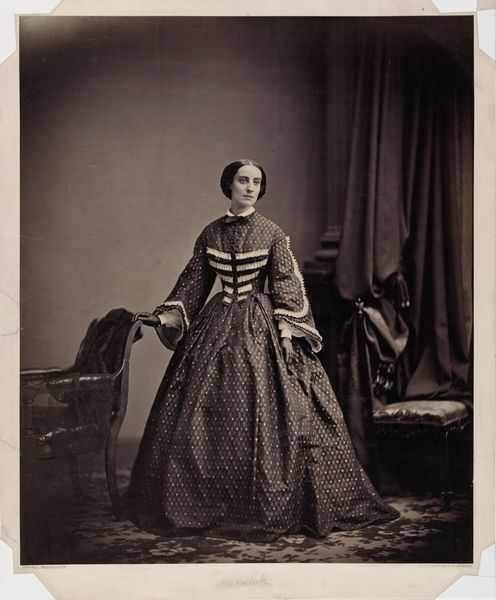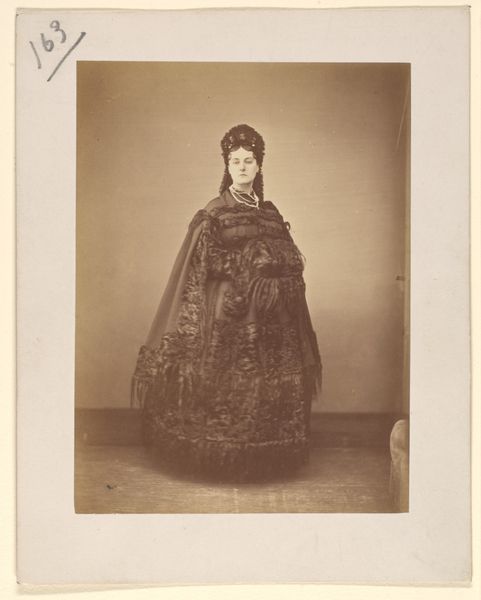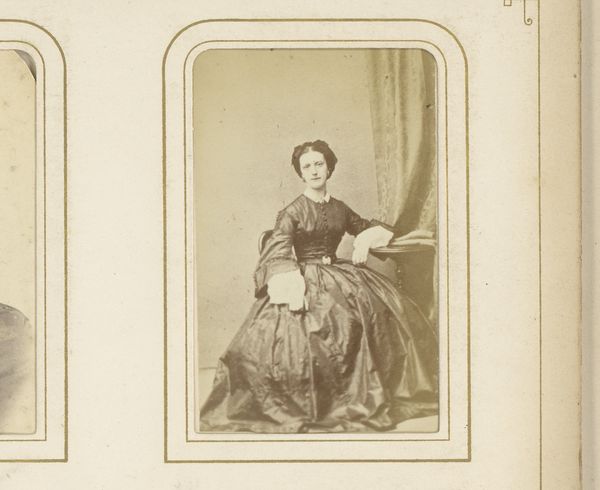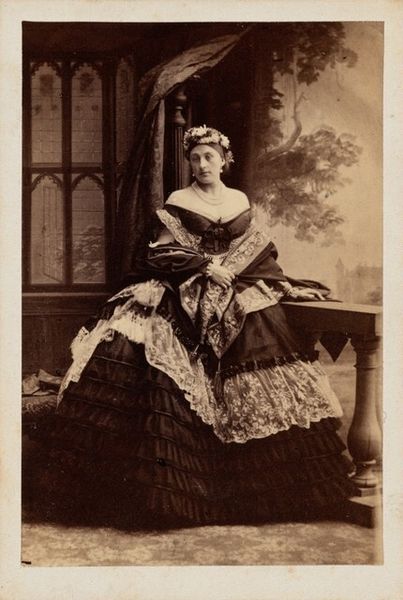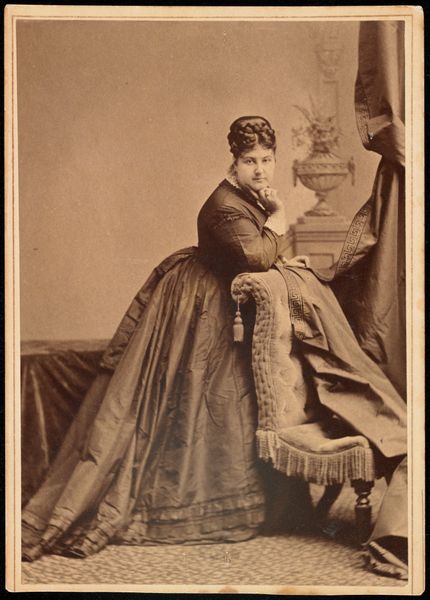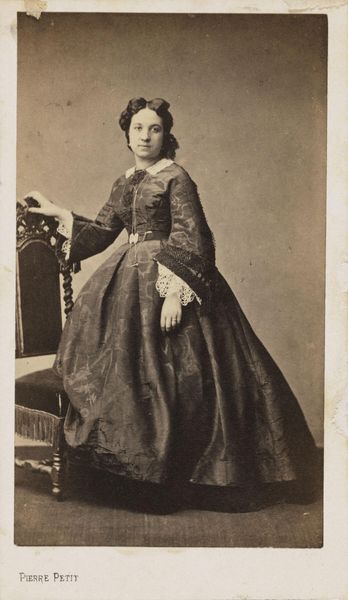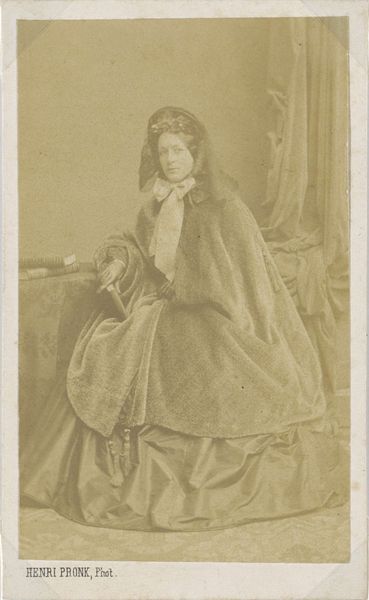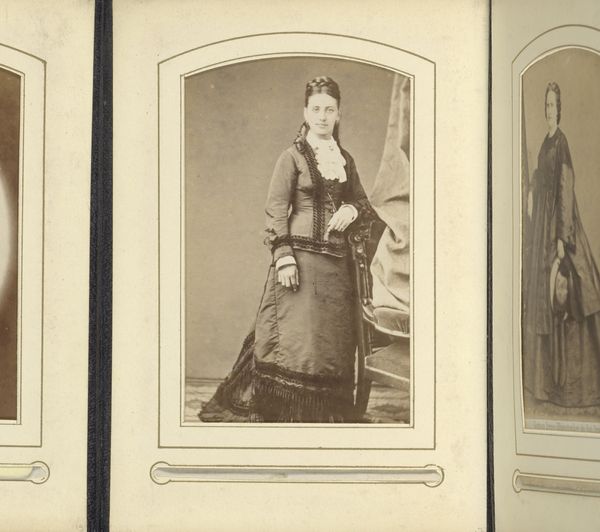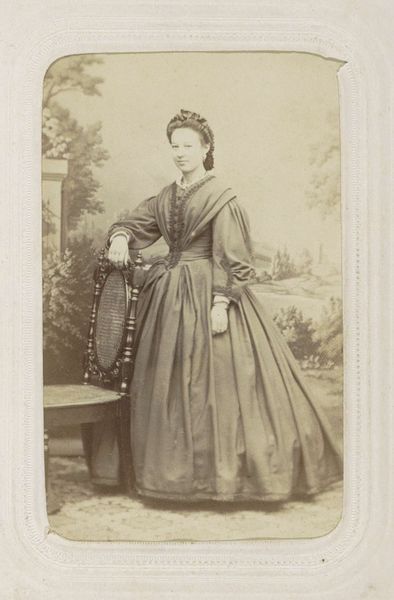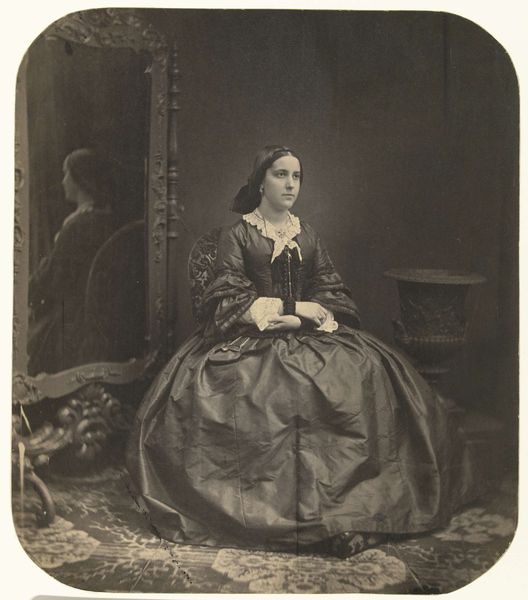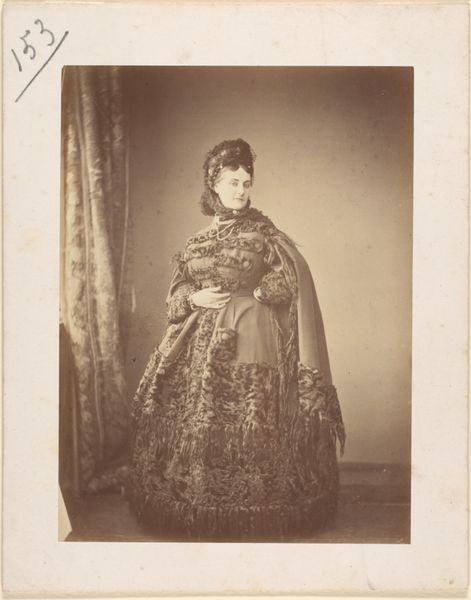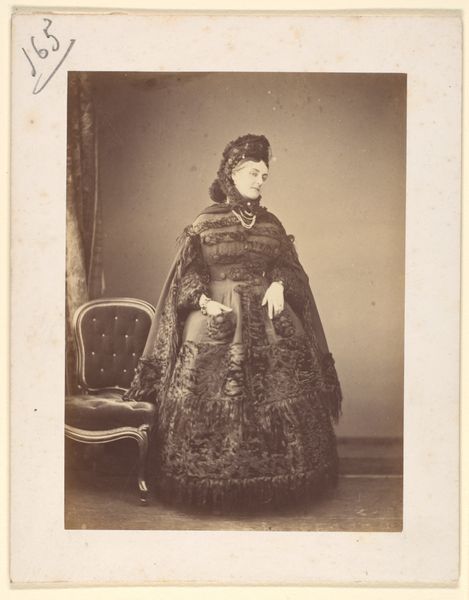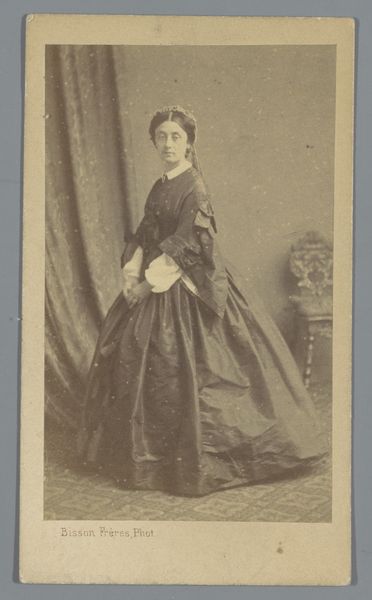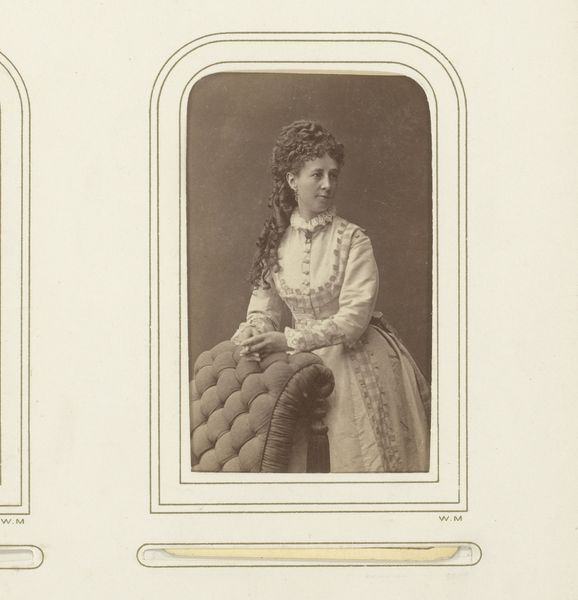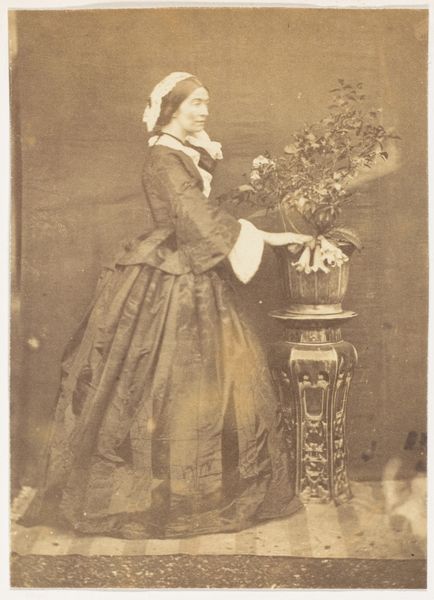
photography
#
portrait
#
photography
#
historical fashion
Dimensions: height 93 mm, width 157 mm
Copyright: Rijks Museum: Open Domain
Curator: Immediately, the somber tones tell a story, a certain... rigidity, don't you think? Editor: Yes, an interesting tension, indeed! What we have before us is a stereoscopic photograph called "Twee portretten van een onbekende vrouw" or "Two portraits of an unknown woman". It was created by Charles Nègre sometime between 1855 and 1863. Curator: Stereoscopic, so originally meant to be seen in 3D! The double image is kind of eerie… like two versions of her existing simultaneously, mirroring each other, but with slight variations. Was it fashionable back then or why use it? Editor: Yes! Exactly! This allowed for a sense of depth when viewed through a stereoscope, quite popular for portraits at that time. It was a way of offering a more life-like representation. Technically, this has to do with binocular vision. What's interesting, however, is how she embodies the cultural codes, the style and composition reflecting societal norms. Curator: And that dress! All that heavy fabric in dark tones. Is that melancholy in photographic form, maybe she mourns something? She kind of looks burdened and trapped but at the same time has an upper hand to carry herself... Also those faint urns of flowers look as heavy as her mood. Editor: It reflects the stylistic conventions and values of that era through dark colors and ornamentation. Photography had just begun gaining prominence at that time as it shifted towards increased artistic autonomy and a pictorialist perspective. Curator: A strange combination, but this duality speaks volumes even now. I mean, think of this stern looking, formally dressed up women in a still kind of rough technology to produce that feeling of distance. I bet she never thought people from all over the world would be seeing it in 3D at some point. Editor: Indeed, viewing it today gives you that rare temporal access to what feels almost a living fragment of the 1850s and 60s frozen and still in that studio setting. We have become intimate viewers, invited into her personal yet very carefully constructed visual reality. Curator: Such are portraits! Thank you so much for unveiling a fragment of this artwork as a symbol, and sign of technology that now defines who we are through its very nature and constant shift of shapes. Editor: You're most welcome! Seeing it through the lens of technology allows a completely new perspective on what we often simply disregard as "another photograph" and it provides unique ways to interpret its cultural codes!
Comments
No comments
Be the first to comment and join the conversation on the ultimate creative platform.
